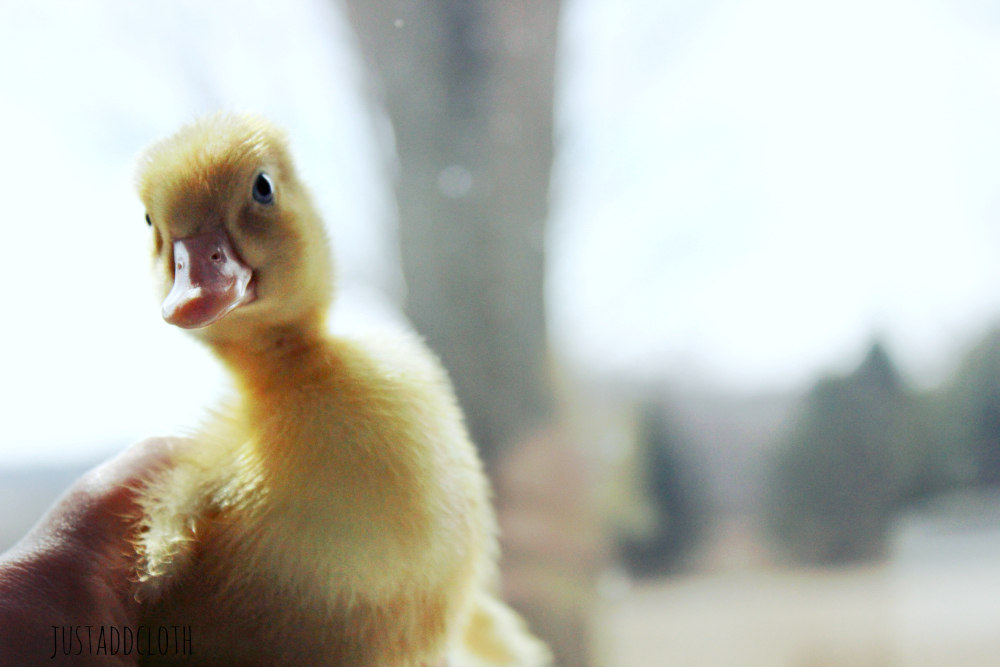
Ducklings are just about the cutest things over and very easy to raise. If you already raise chickens, then you probably already have most of things you need to raise ducks. A duck brooder will be similar to a chick brooder, but there are a few differences to keep in mind.
To make a brooder for your ducklings you need:
-a container
-heat source
-absorbent litter/bedding
-water for drinking and head dunking
-chick feed
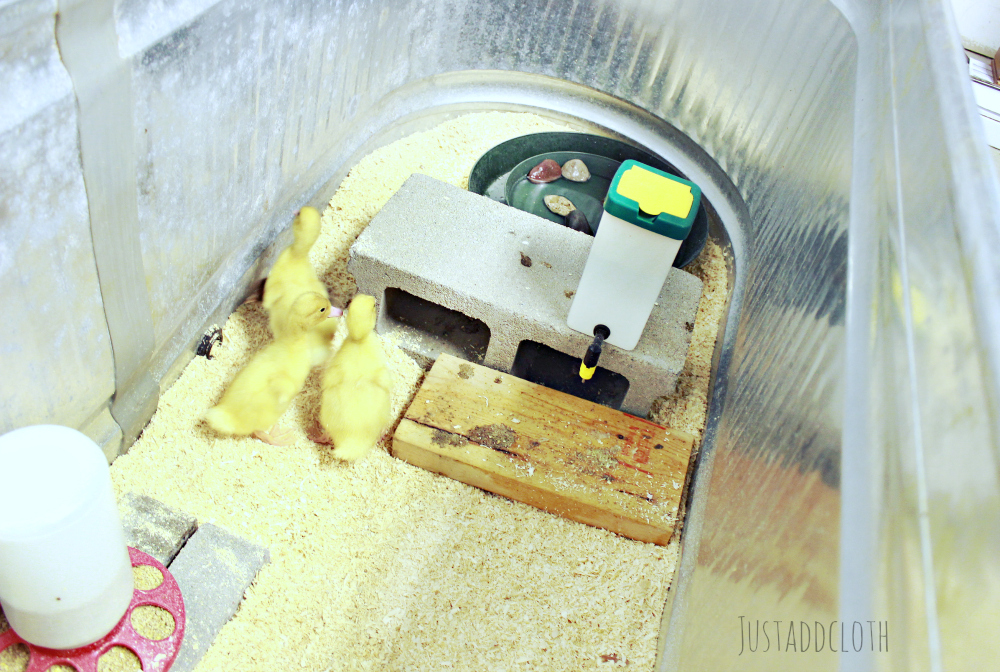
Container
The container that makes up the brooder needn’t be fancy. It just needs to keep them safely contained, have plenty of air flow, have access to bright days and dark nights, and a dry warm area for sleeping. Due to the way ducks splash, a duck brooder should have more surface area in the brooder or a way to control the dampness. Some people can create a brooder area in a barn, but we live in a very cold climate and need to raise chicks and ducks in our house for a long time.
We use a large 6ftx2ft metal water trough. This worked fine for five pekins for about a month until they became a wet sloppy mess every two hours. If you live in a cold climate like we do, I recommend not getting your ducklings until June so you can move them outside at three weeks.
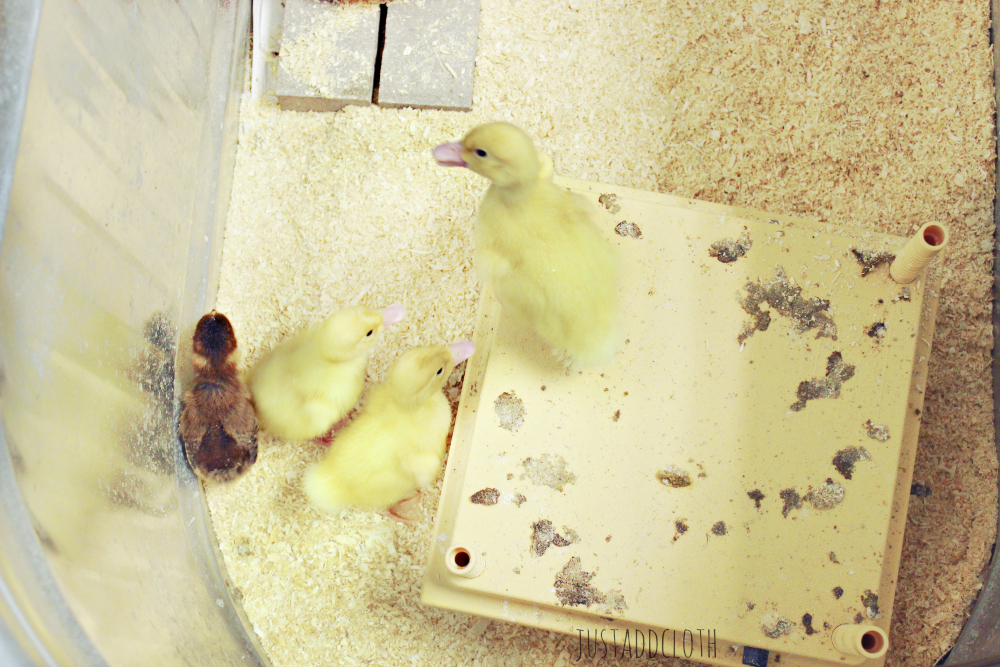
Heat
I am not a fan of heat lamps since they can be a fire hazard and they tend to heat up the entire area. If the entire brooder is hot, the birds have no where to go if they feel too warm. I use a heat plate that sits up on stilts. This way the ducklings can frolic and play, then choose to go the warm area. Ducklings run warmer than chicks and stop huddling under their heat source much sooner. They can easily get over heated.
Keep the warm area dry and away from the water. Ducks can splash their water quite far. You don’t want the warm bedding getting wet. The moisture combined with warmth can grow mildew and mold very quickly which can be very bad for young fowl’s respiratory systems.
Litter
Use pine shavings, paper shreds, and even straw hay as litter. Ducklings are hardier than chicks and grow very fast. They can easily trample over hay at just a couple days old unlike baby chicks. I layer newspaper over the metal of the trough since plain shavings on the metal floor is too slippery.I lay paper towels over the newspaper for a grippier surface. Then we mix pine shavings and straw over the paper. We keep the water on one end and warmer on the other end.
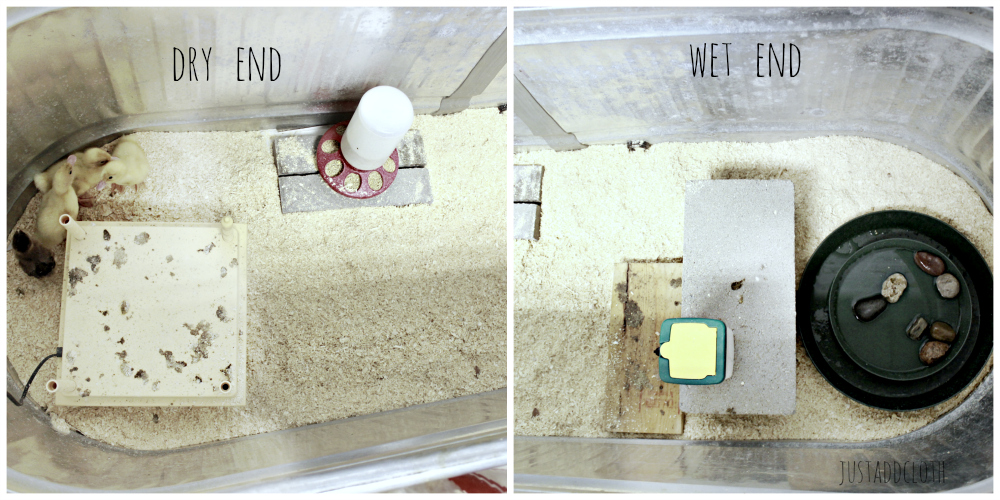
Water
You can use a nipple waterer for ducks and they figure it out quickly. However, they like to clean their nostrils and splash their heads in Water. You can use a container to create A drinker with a hole just the size of their head so they can head dunk, but not get into the water. But you will need to make a new one every few days since they grow quickly. I prefer to use a shallow tray for Water.
Water can’t be too deep at first. We use a plastic plant pot tray. It is low enough for small ducklings to crawl over the side, but not deep.
I add some river rock so they can dip bills and splash a little for fun, but cannot not possible drown.
Change water three times a day to keep it fresh. Ducks poop a lot in their water. Plus, they splash a lot of the water out.
You could also choose to only have a nipple waterer in the brooder, but give the ducklings a designated pool party time each day. You can fill a sink or tub with an inch of water (more as they get older) and let them have a 20 minute supervised swim & splash. When they are done, make sure to put them back under the heat source. This not only keeps your brooder much cleaner, but handling the ducklings so often will also make them friendlier as they get used to you.
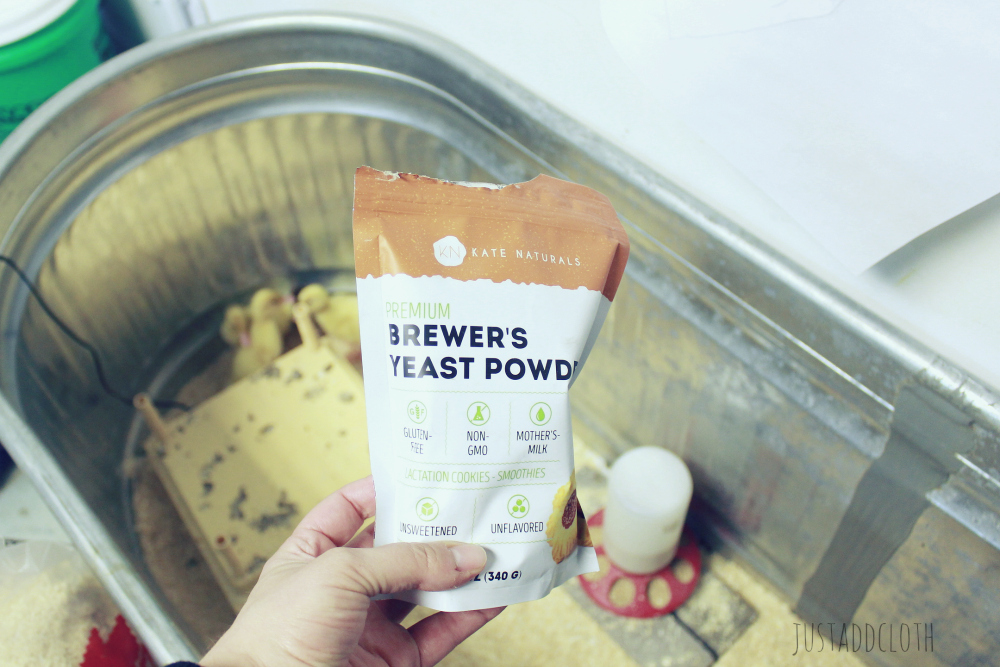
Food
Food must be UN-medicated for ducks. A basic un-medicated chick feed crumble is fine.
Some people add brewers yeast to the feed for extra niacin since ducks need more niacin than other fowl. They require it for wing and feather development. You can use the same brewers yeast mothers use for breast milk production. Peas also are high in niacin and give the ducks something fun to bob for in their water. Wait until the duckling are 10 days old before giving them whole peas though so they don’t choke.
Feed can be left available all day for the first month, but make sure they have access to water whenever feed is present. Once we move our ducks out to the run, we put them on the same feeding schedule as our chickens.
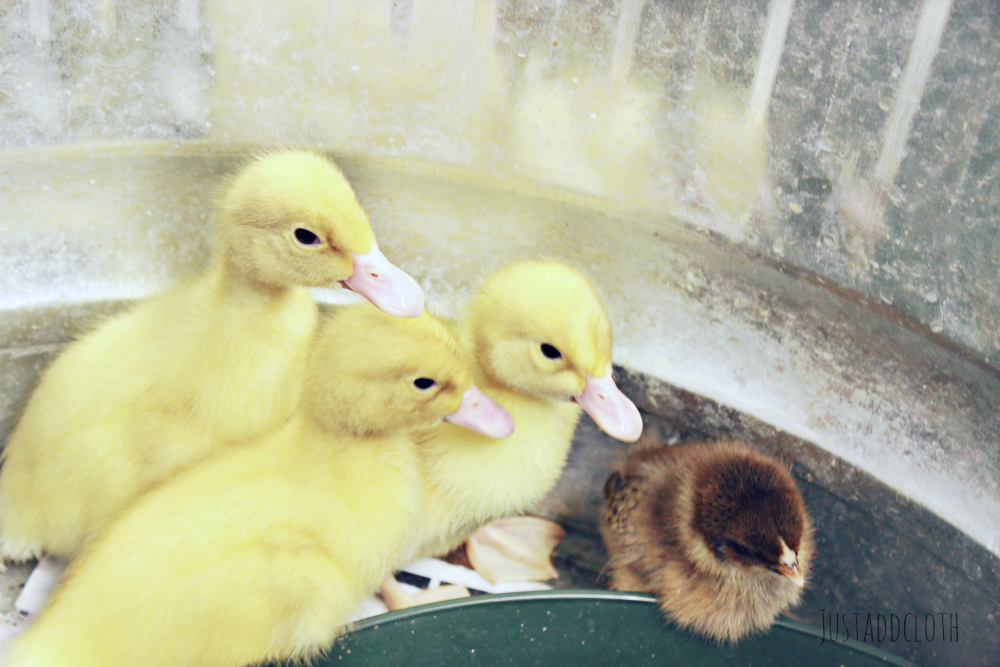
Moving Out
So long as the weather is nice, you can move your ducklings outside into a protected run at around 3-4 weeks old. Honestly, they get so big so quickly that you’ll want them out of your house by this point anyway. The duck poop is far smellier than chick poop and all the splashing quickly turns into poop splattering.
Our weather stays in the 40s and 50s well into June, so we tend to keep our ducks in the house for quite a while. If you are also in the frozen tundra, just wait until early summer to get your ducks.
Unless you are handling your ducklings for hours each day, they will likely be rather skittish. Especially in a group. If you have just a single duck, she will act more clingy and needy toward you. If you want your ducks o be more friendly, make sure to talk to them and gently handle them often as ducklings, so they trust you.
Duck are truly a joy to raise. And brooding them is pretty easy, yet messy. I don’t recommend trying to brood chicks and ducks together. You can do it if it is only a small few in a large brooder. Otherwise the splashing can be an issue for chicks. I have a lone Easter egger chicken I raised in the brooder with my pekins and she was fine being soaking wet all of the time, but she was a tough little chick. She still hangs out with the ducks since they were her buddies before any other chickens. I also have raised Barred Rocks with pekins in a single brooder. It is doable, but requires a bit more work. Especially since ducklings grow more quickly than chicks.
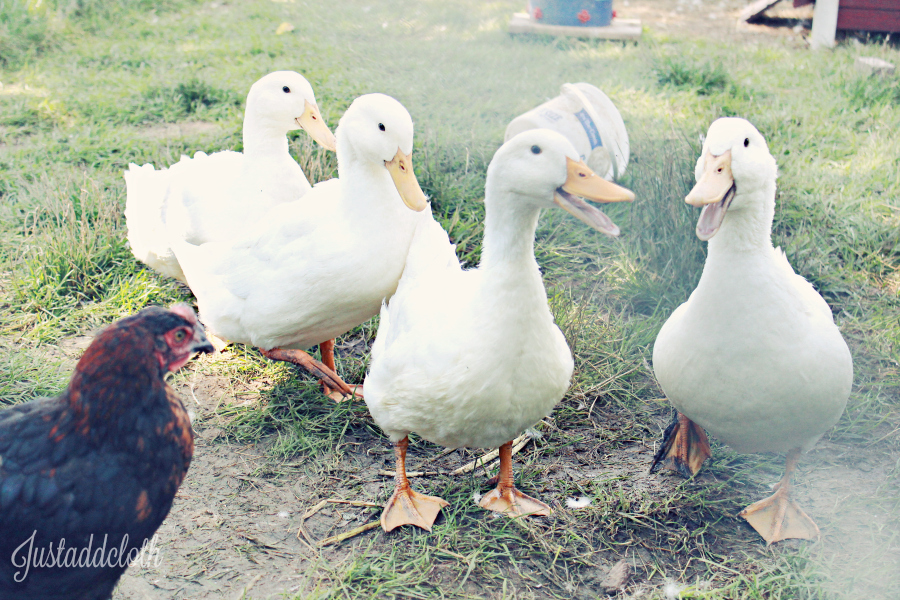


Pingback: A Quick Guide to Raising Ducks • Lake and River Studio